This is one in a series of posts on the Fujifilm GFX 100S. You should be able to find all the posts about that camera in the Category List on the right sidebar, below the Articles widget. There’s a drop-down menu there that you can use to get to all the posts in this series; just look for “GFX 100S”.
A few days ago I did some MTF testing using a sinusoidal Siemens star target, using Imatest software. The results were strange, particularly with respect to modulation transfer function (MTF) normalization. Someone who knows far more than I about these things suggested that I ignore the results. Too bad, since the Siemens star test allowed rapid collection of MTF data in many orientations. Ah, well. Good data obtained quickly is infinitely superior to bad data that comes easily.
So I went back to my old reliable slanted edge. In this case a low contrast one, shot from about 7 meters away.
I shot the captures using the following protocol:
- GFX 100S
- C1 head
- RRS legs
- 2-second self timer
- Manual exposure
- Manual focusing at taking aperture
- For the 80 mm lens: f/1.7, f/2.8, f/4, f/5.6, f/8
- For the 110 mm lens: f/2, f/2.5 (oops!), f/4, f/5.6, f/8
- 3 shots per setting, picked the best one using Imatest
- Developed in Lightroom 10.2 with default settings except the following
- White balanced to lower left gray background
- Sharpening turned off
I analysed the images with Imatest SFR module.
The MTF and edge profile results (ignore the LW/PH numbers; Imatest calculated them from the dimensions of the crops it was fed):
Wide open:
Luminance MTF50 is about the same for the two lenses. But look at the disparity in the color channels of the 80 mm lens! There is some serious chromatic aberration of some sort — probably longitudinal (LoCA), since we’re so near the lens axis.
F/2.8:
The 110 is a not quite as sharp, but that could be focusing accuracy and the fact that I mistakenly set the aperture for the 110 at f/2.5. The color channels of the 80 mm lens are falling into line, but are still not as congruent as the 110.
F/4:
The 110 is marginally sharper. I wouldn’t put much weight on that. The difference is very small.
F/5.6:
Diffraction is affecting both lenses, and the 110 is retaining its paper-thin lead.
F/8:
It’s a tie.
The 80 mm lens is very close to the redoubtable 110 in on-axis sharpness.
Note: setup, including target design, paper, how printed, lighting, and the phase of the moon affect slanted edge MTF testing. You should only compare numbers using the same testing protocol.
Warning: nerds only beyond this point.
A reader detected curvature in the edge in the captures, and speculated that the curvature could invalidate the results. I took the same captures, and reran the analysis with the width of the region of interest reduced from 931 pixels to 197 pixels. The numbers went up a bit, but the conclusions don’t change.
I will spare you the f/5.6 and f/8 graphs.
The captures used may have changed since the protocol required picking the best Imatest results for each test condition.
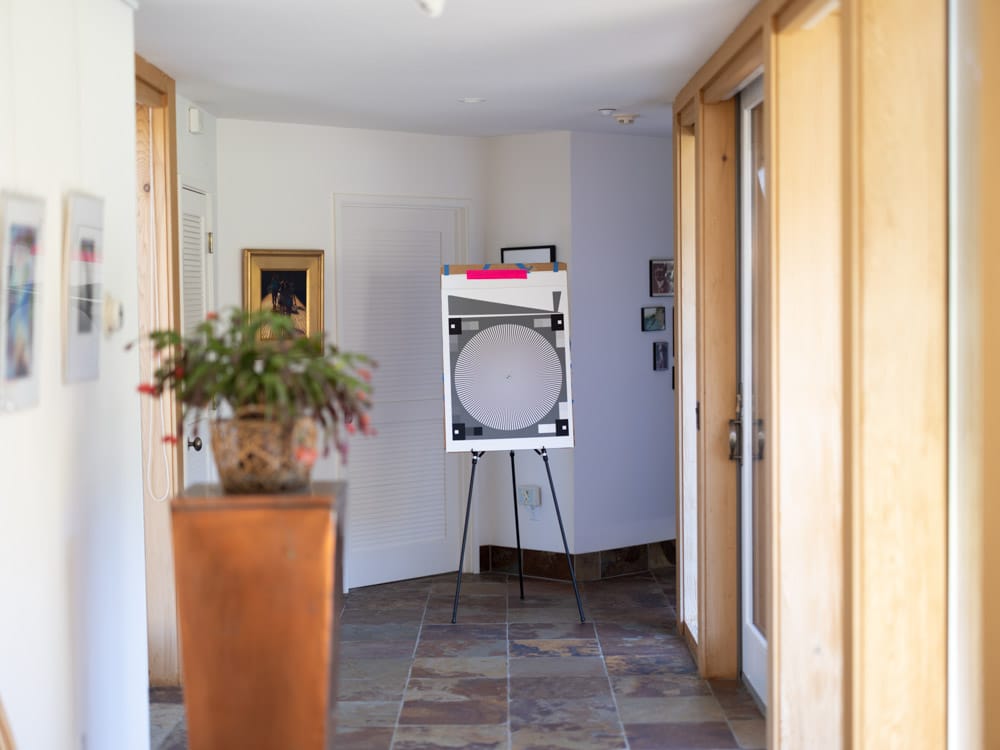
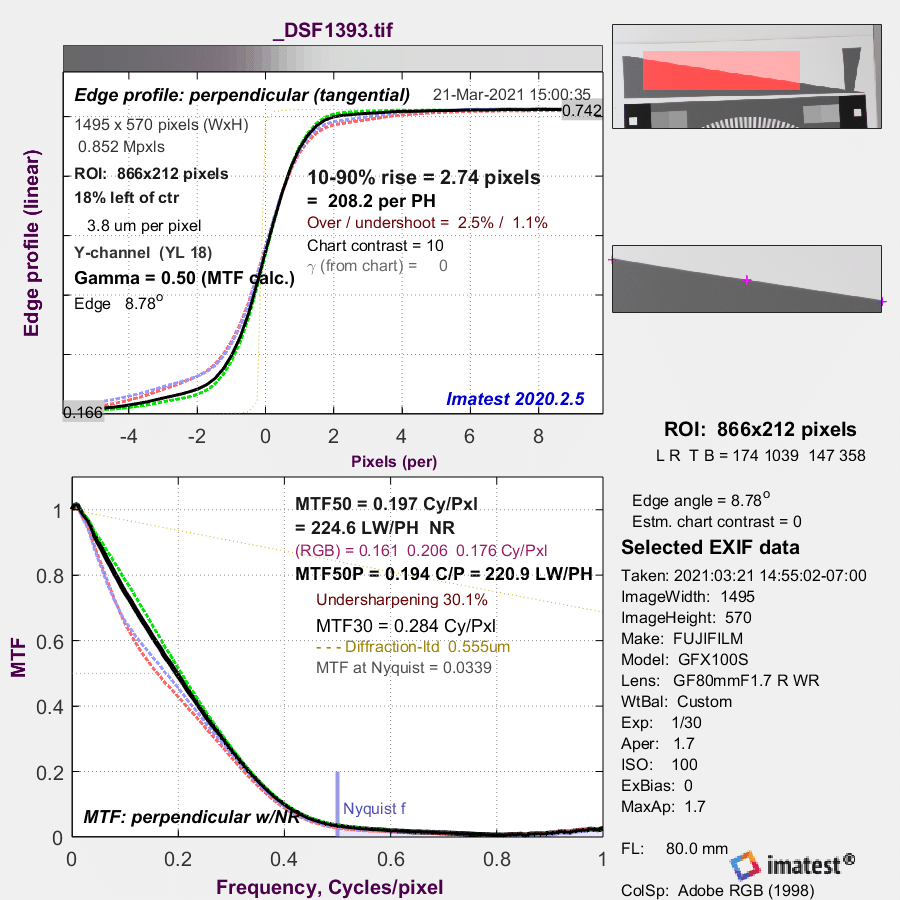
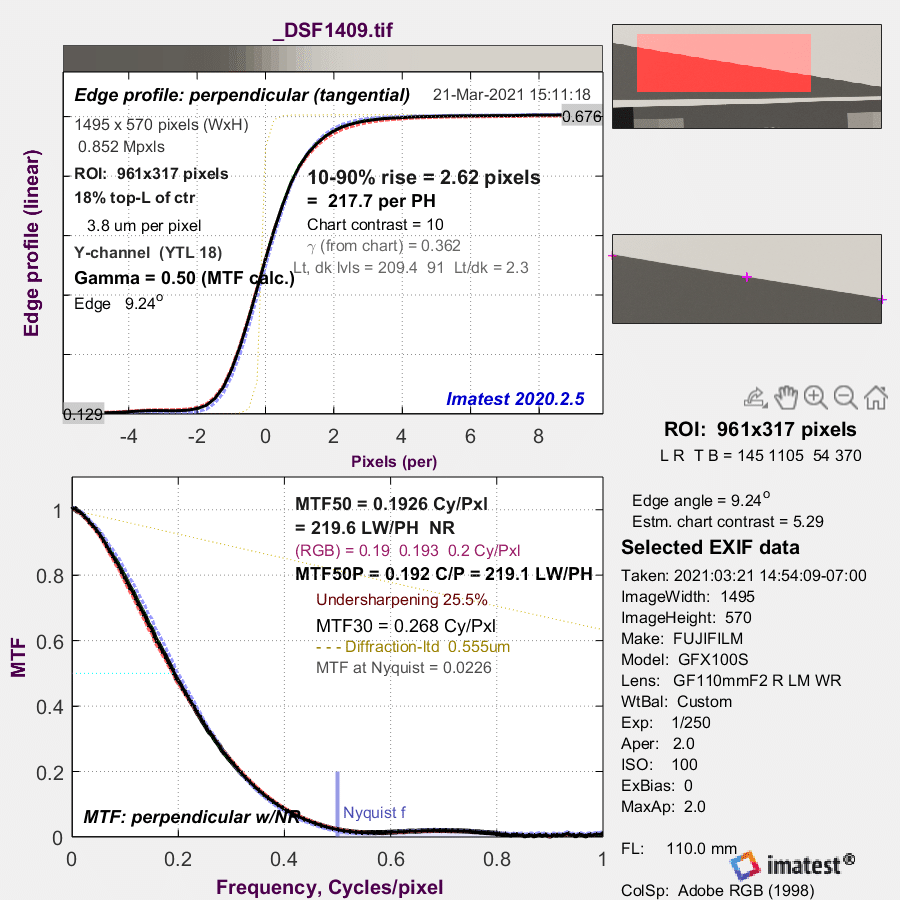
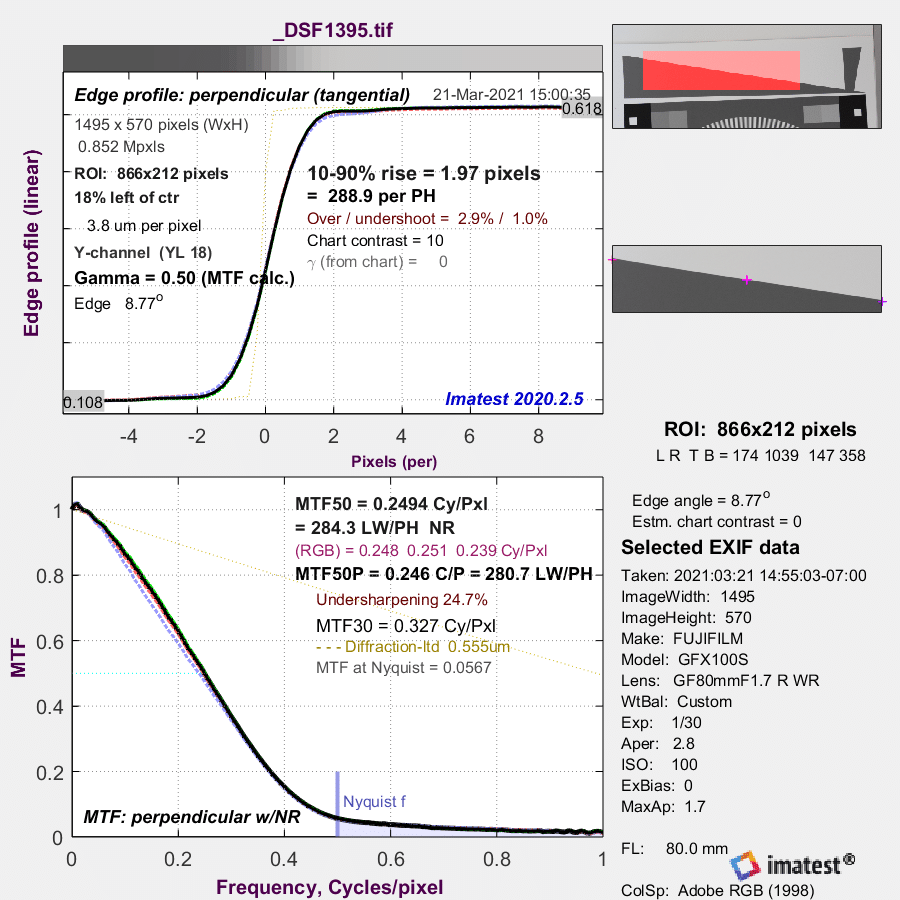
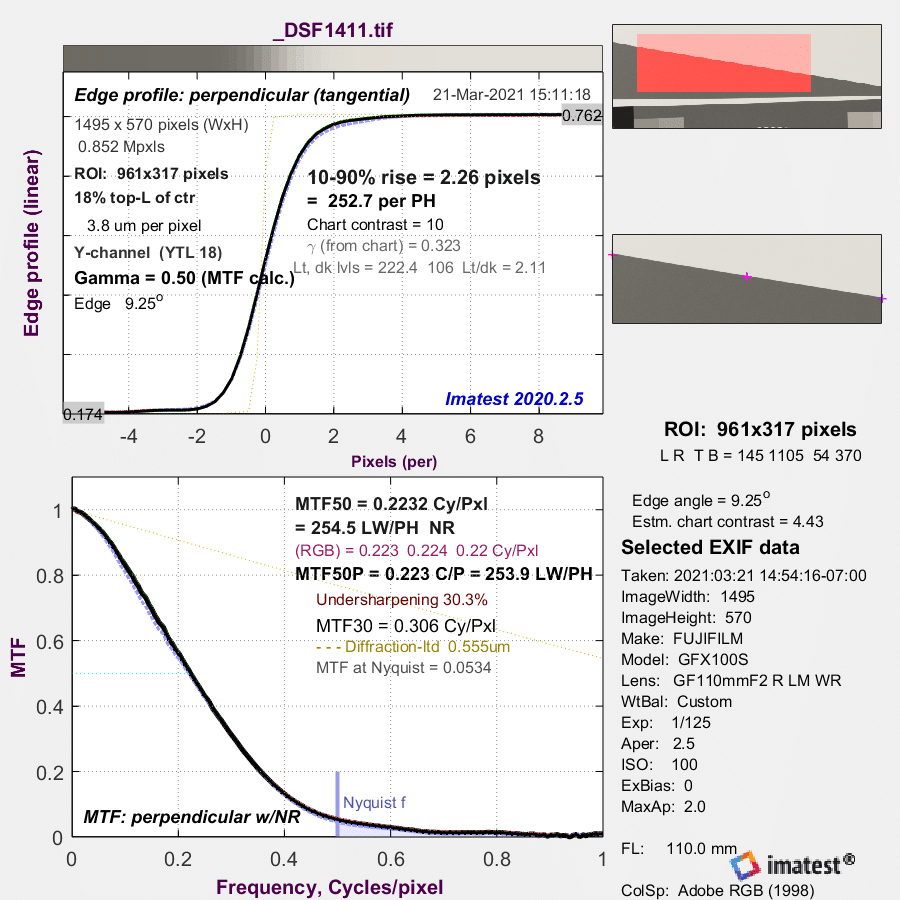
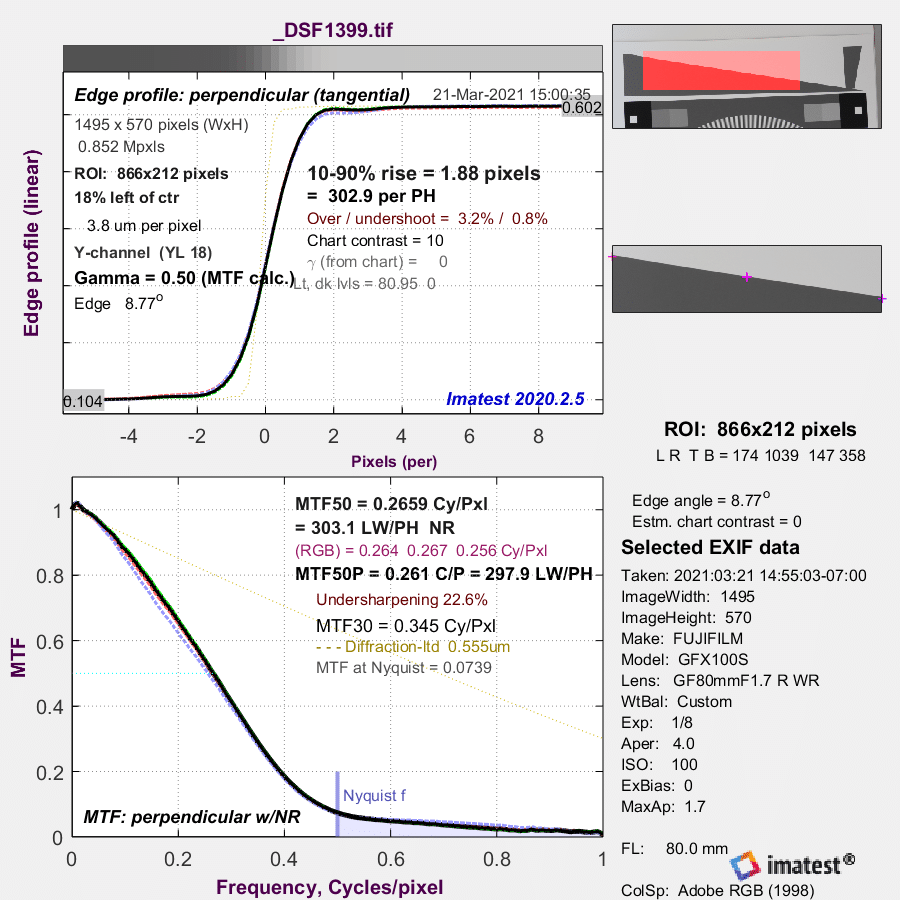
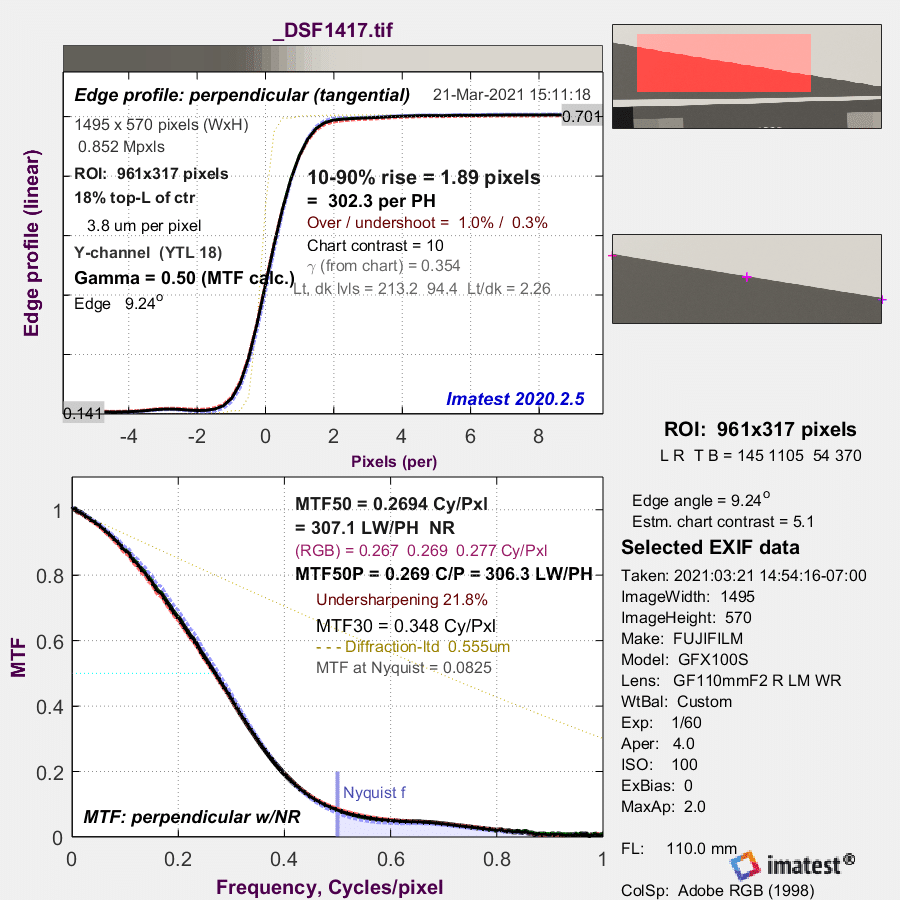
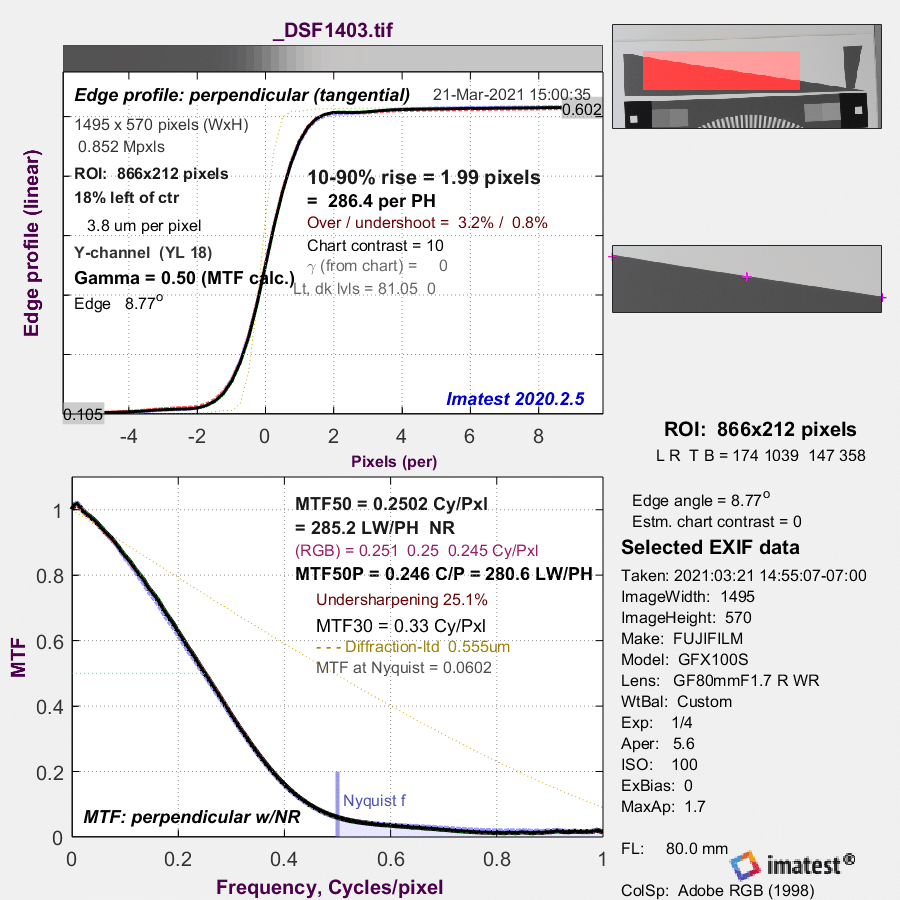
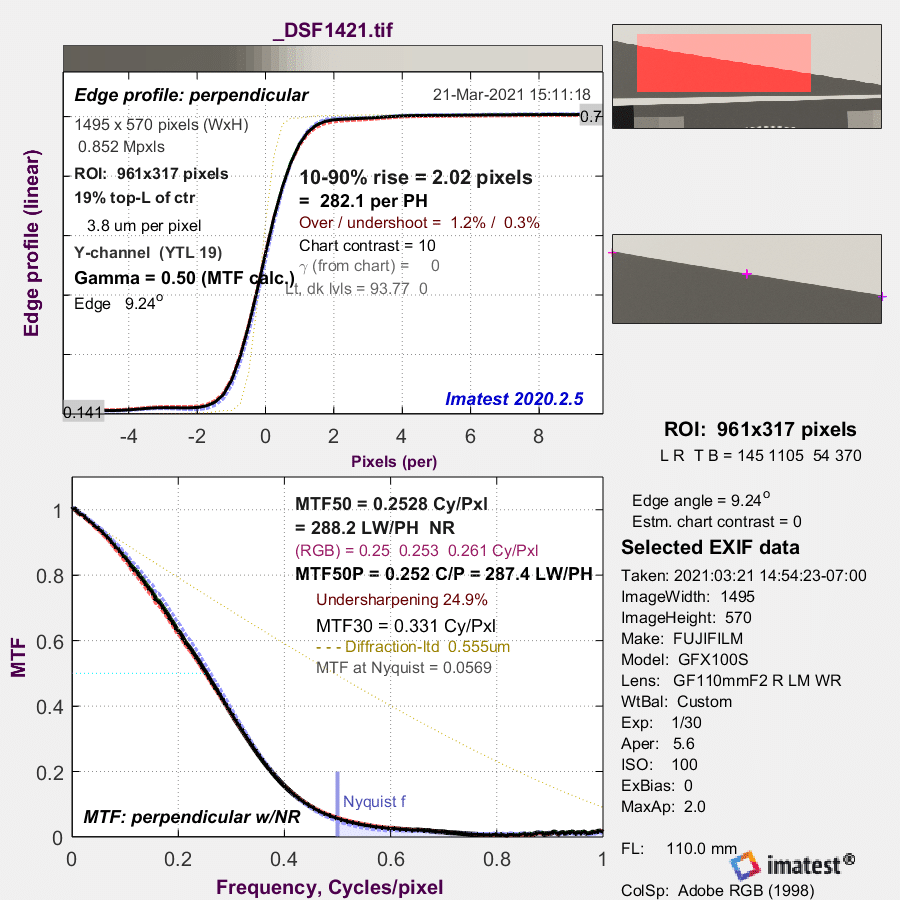
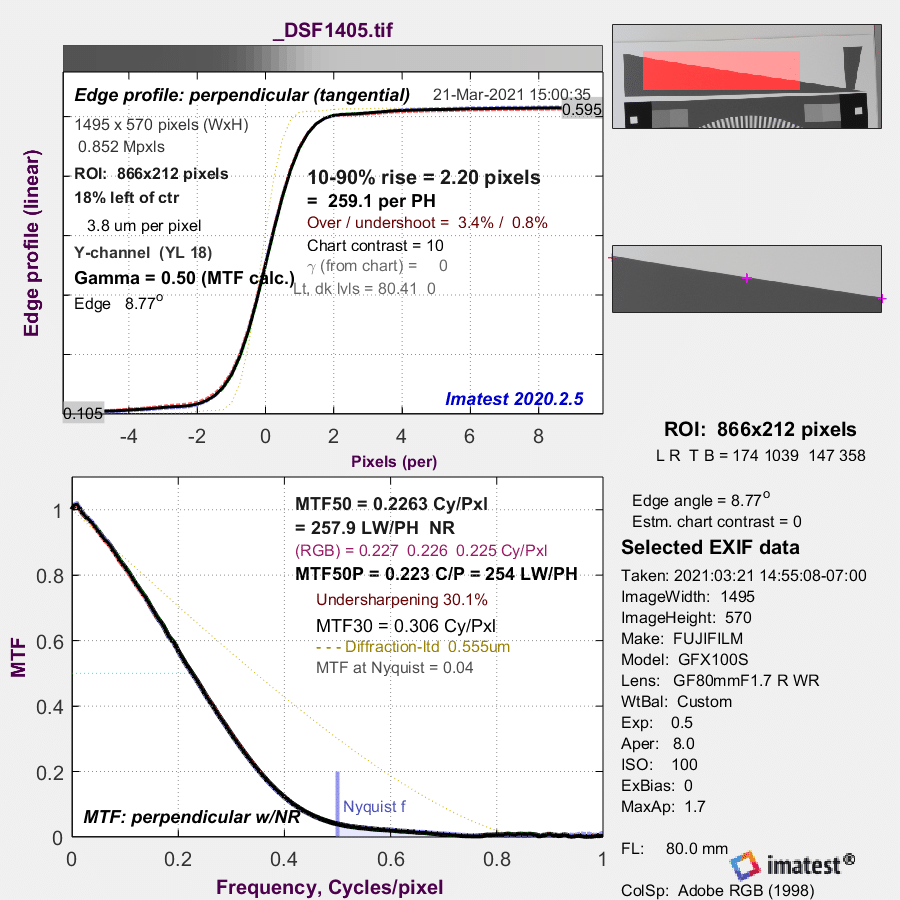
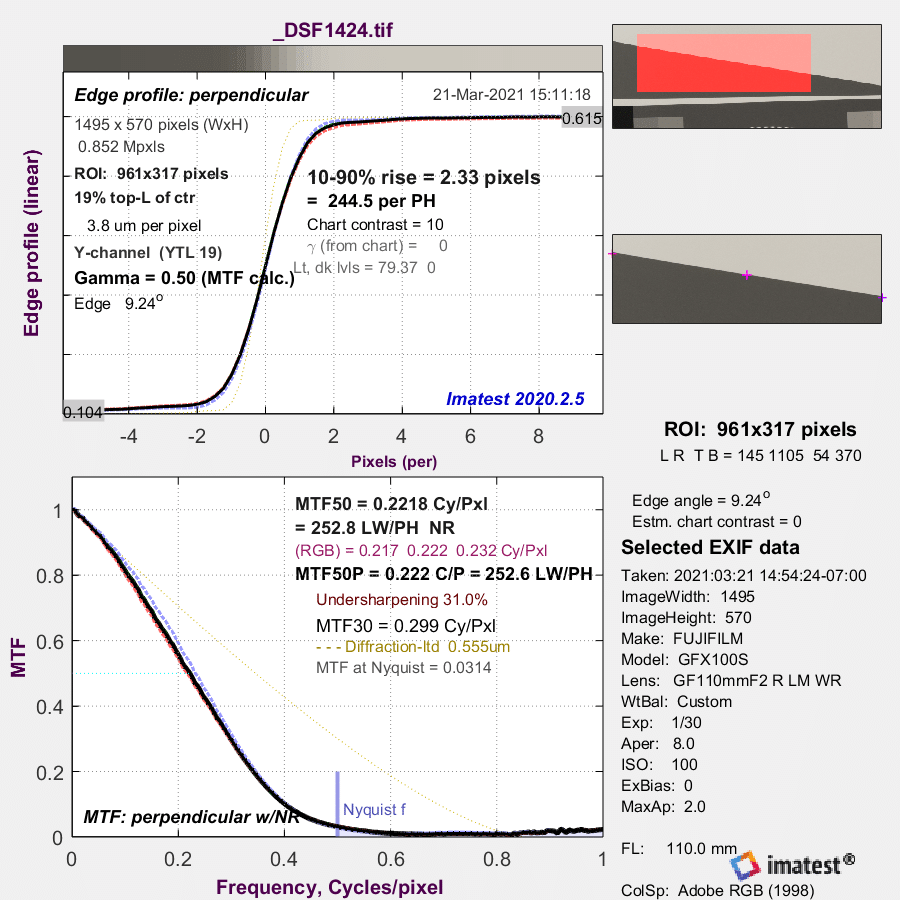
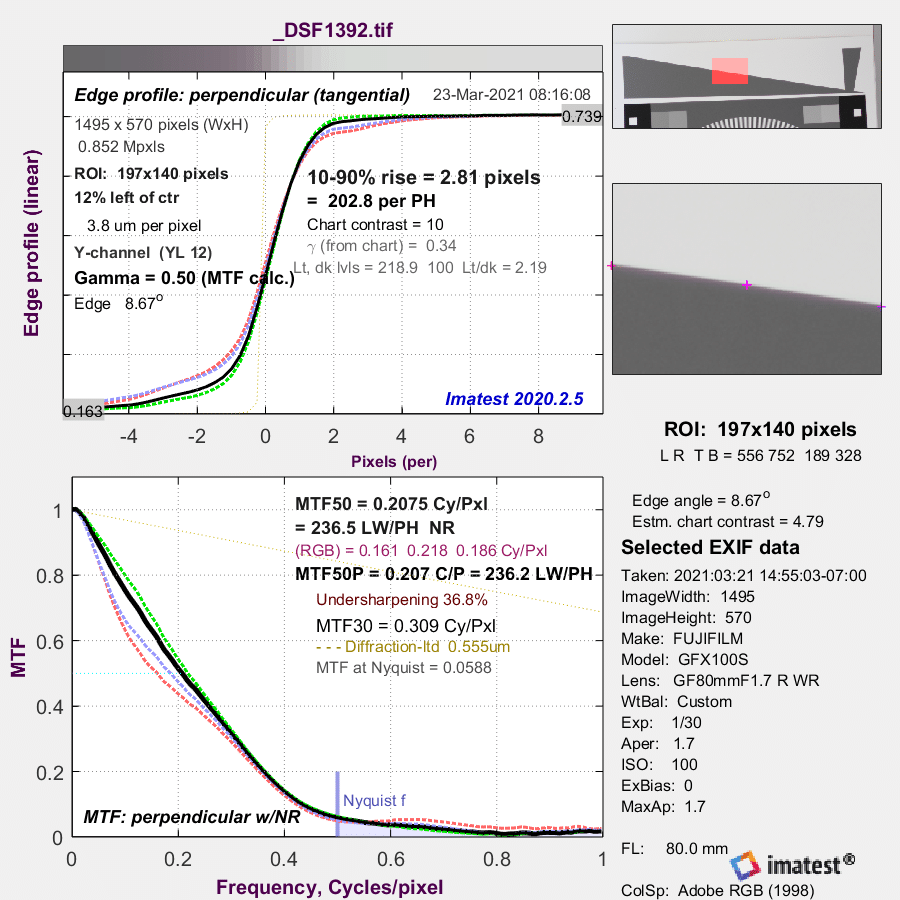
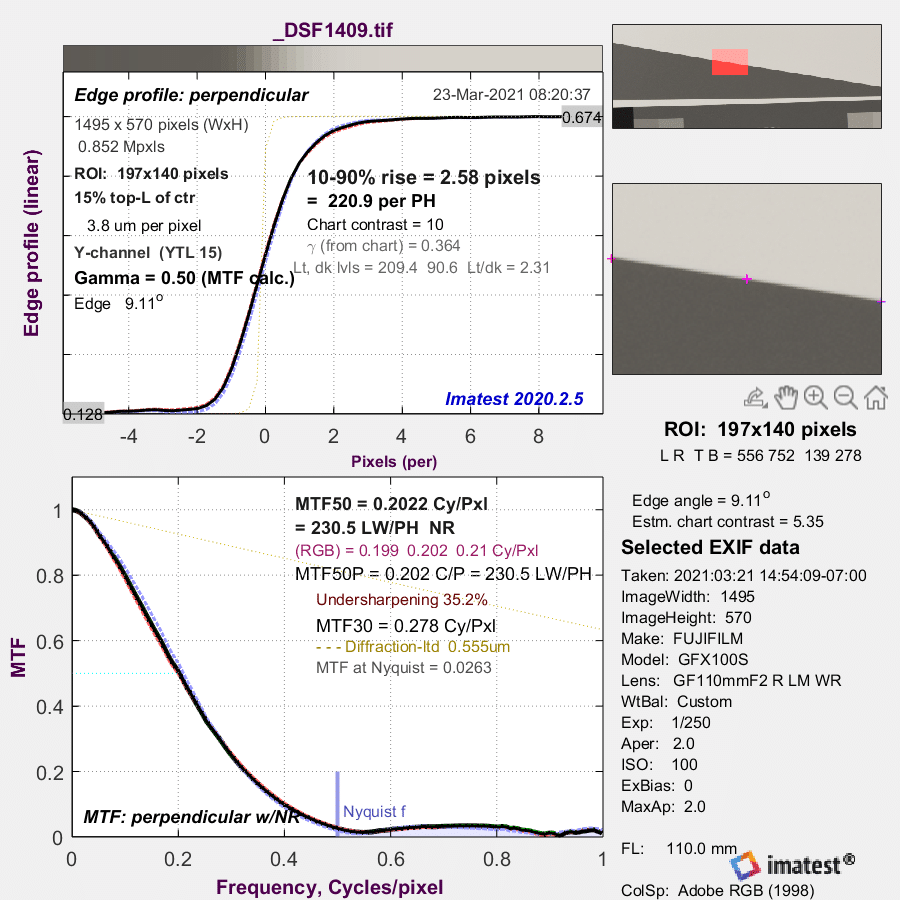
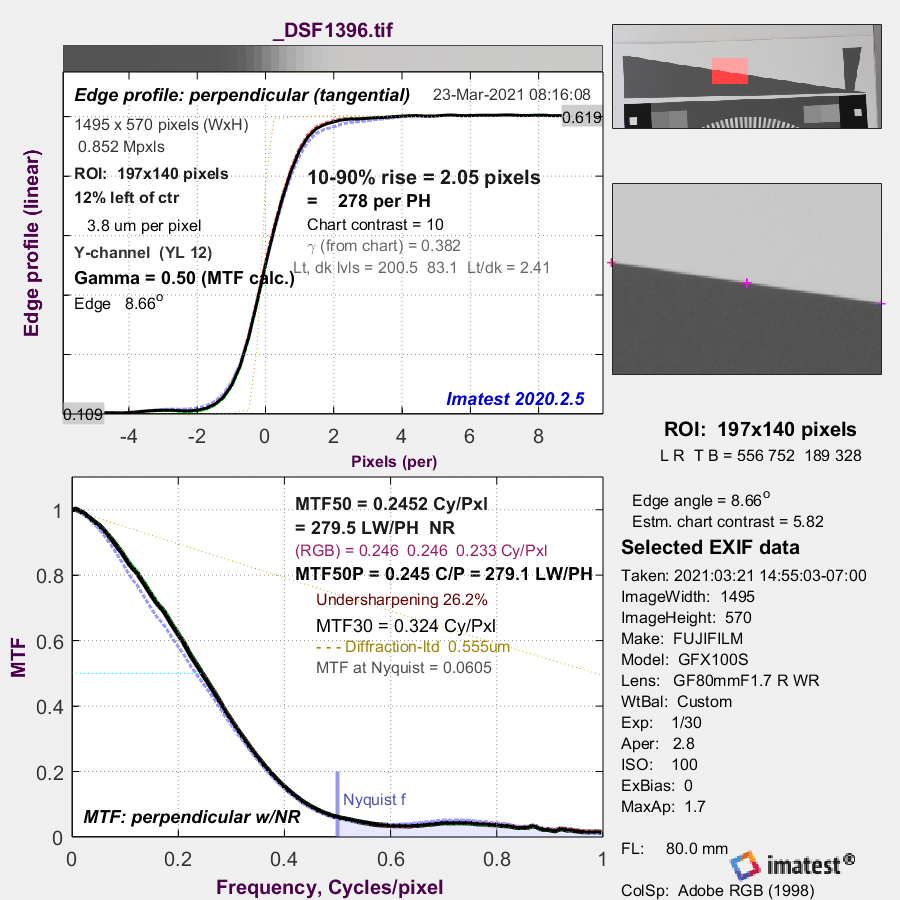
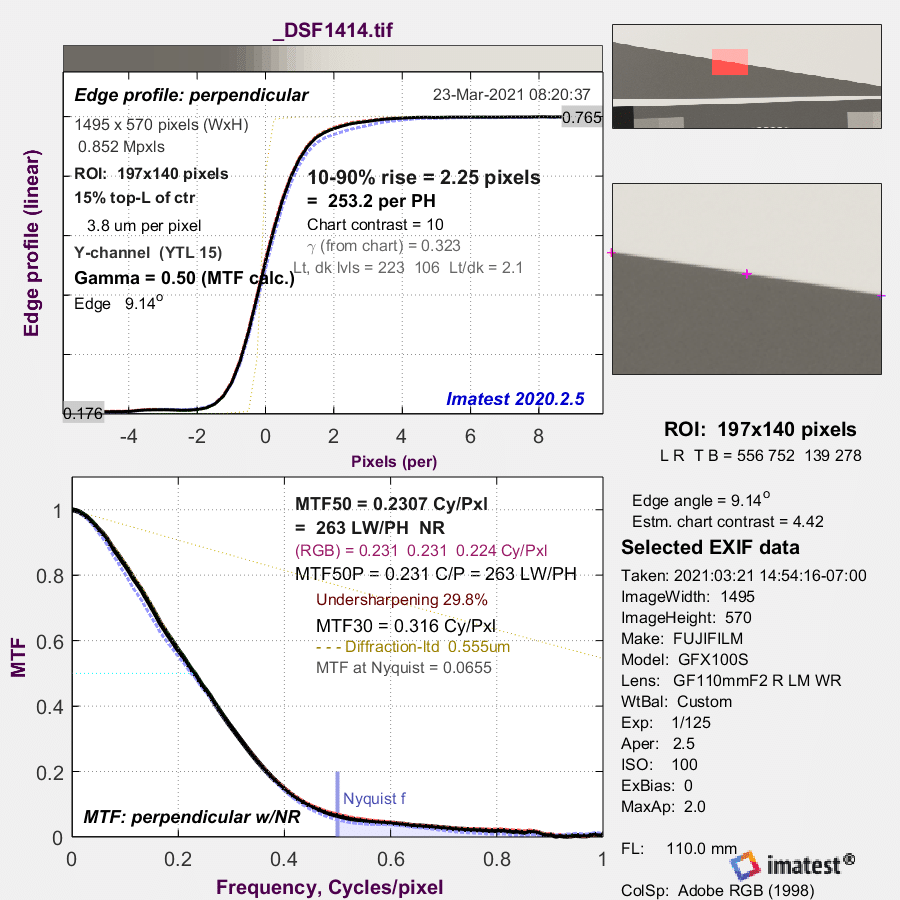
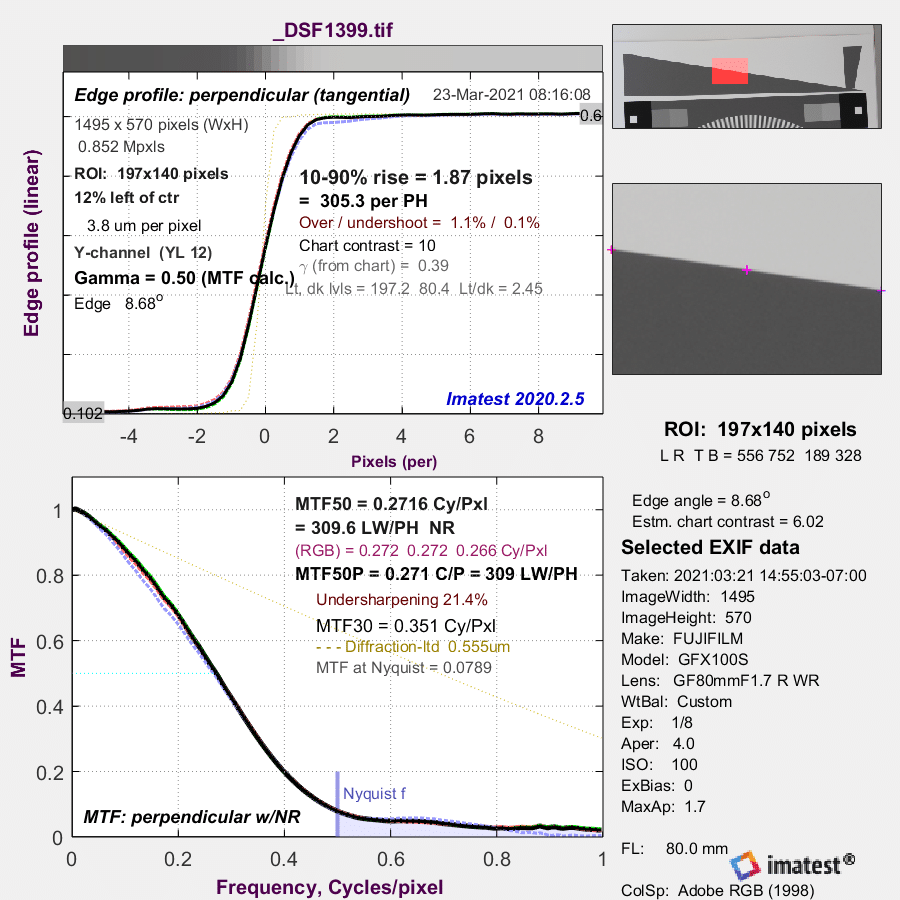
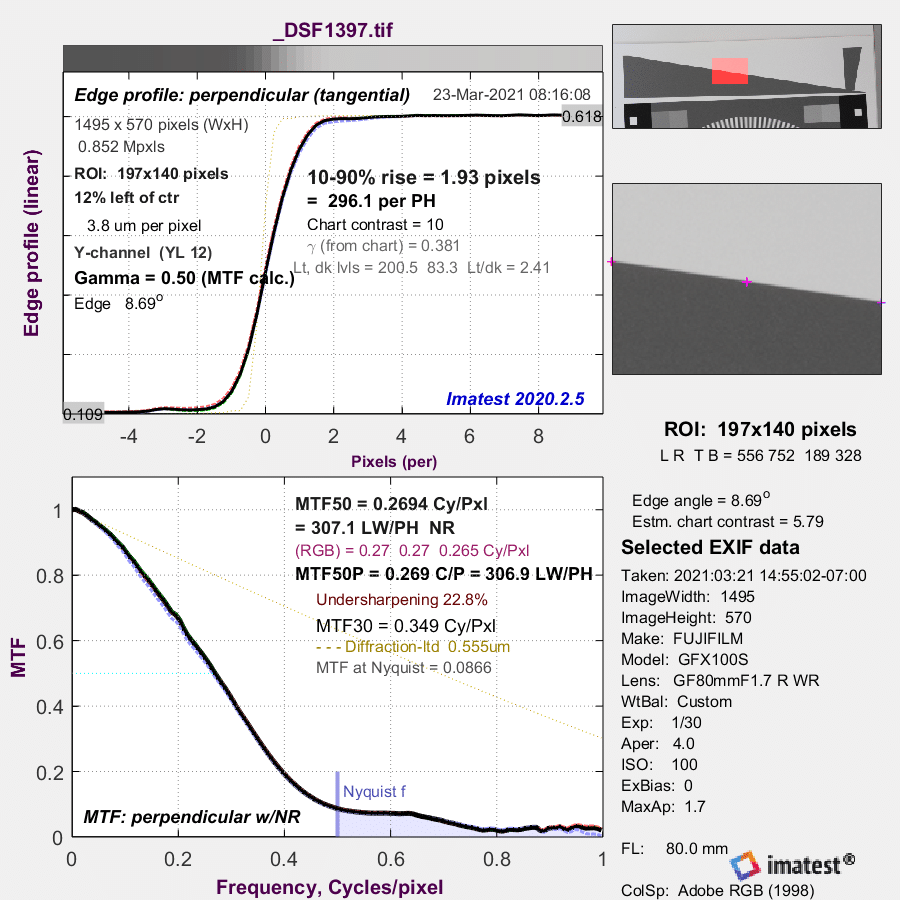
Farzaan Kassam says
Hi Jim, I think the F2.8 and F4 images are incorrectly placed. Great info however and matches very closely my own testing of the same lenses. I was surprised to see the GF80 at F1.7 matches the GF110 at F2 even though it appears less sharp in actual images. I place that look on the aberrations which are clearly present in the GF80 below F2.8.
JimK says
“Hi Jim, I think the F2.8 and F4 images are incorrectly placed.”
Fixed. Thanks.
Ilya Zakharevich says
In comments to
https://blog.kasson.com/gfx-100s/fujifilm-gfx-100s-pixel-shift/?unapproved=263036&moderation-hash=e2f5874627728a4f1eb06dfb921dac76#comment-263036
I indicated that the claimed value 7.4% of MTF at Nyquist at ƒ/4 (of 80mm lens) may be 5 times less than the actual MTF of the lens.
The first conjecture which comes is:
This is not “a slanted edge”!
Observation: the simplest implementations of algorithms to “calculate MTF given the image of a slanted edge” (like what I wrote myself about 2 decades ago, when trying to guess why they put slanted squares on the test charts ;–) assume ¹⁾ that the image of the contrast boundary is straight. This should better be true with the precision say ∼0.2pixels. (Maybe a bit more; cannot check right now…)
¹⁾ It should not be very complicated to modify the algorithm to allow a slight curvature of the image. But one should pay attention — and I do not know whether Imatest did it!
In your settings, the magnification is about 1:90, so the error on the source should be less than about 20×3.76μm. This is close to what I expect a good printer can achieve — anyway, it should be possible to check this looking “almost along paper in the direction of the edge”. (Like with anamorphic scull in “The ambassadors”.)
However, even if the source is straight enough, the optical system is not. Is the distortion controlled well enough to the level of sub-pixels? If not, the result is not very meaningful…
JimK says
See additional analyses.
AHMED GENCAL says
So if i understood right 80mm can only catch 110mm at f8 for center sharpness. Is that so?
JimK says
Small distinctions in MTF may be caused by focusing differences and are not meaningful. I think the two lenses are virtually evenly sharp in this test, except for the wide open shots.
AHMED GENCAL says
What about corner sharpness? I have bought 110mm after your 120mm macro 110mm f2 comparrison and suggestion to use at landscapes. I really wonder if 80mm can compete with 110 at f5.6-11 for landscape use.
By the way thank you for all this efford
JimK says
Did you see the Siemens star visual comparison? That has corner shots. I will be doing natural scene comparisons.